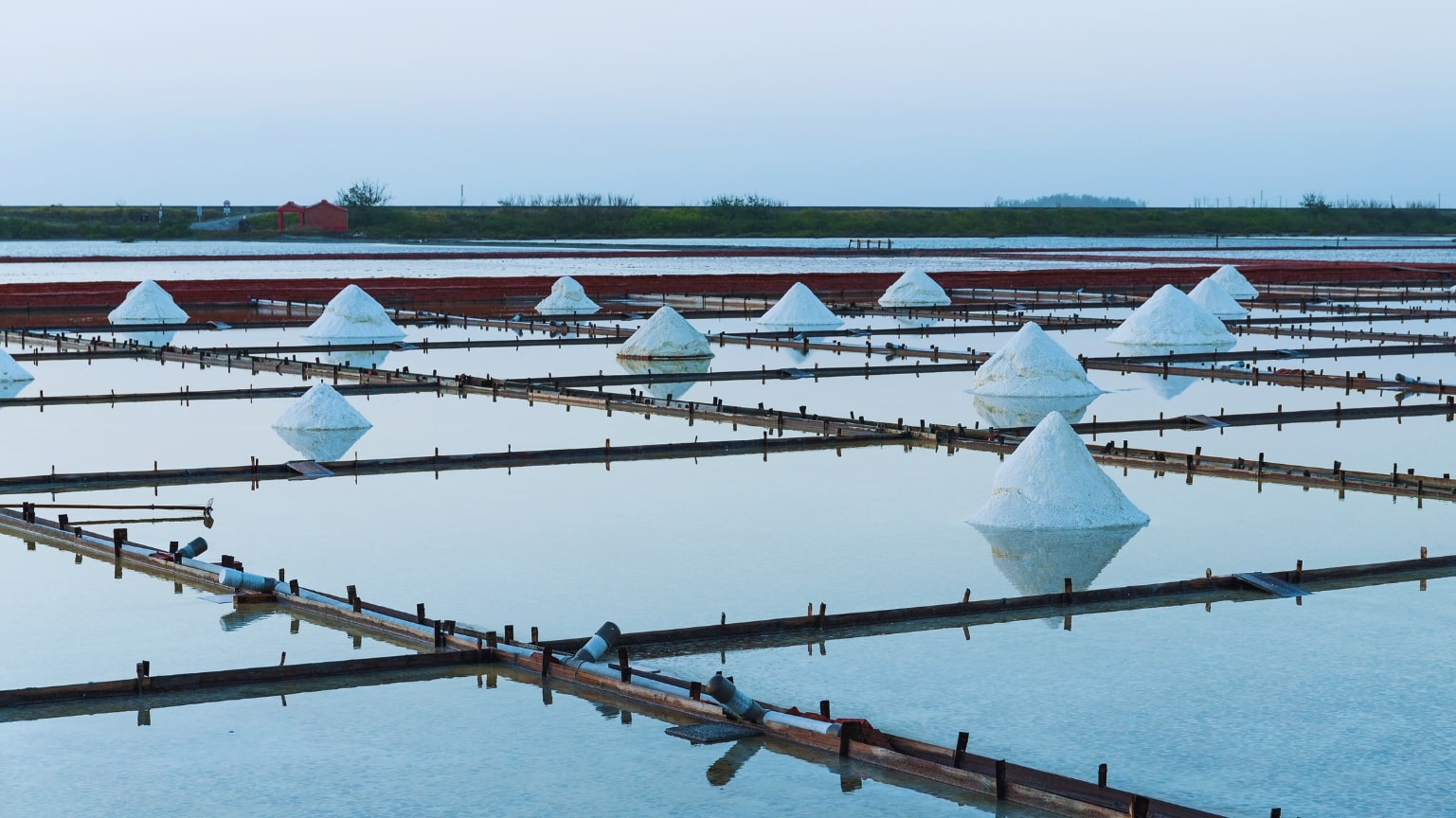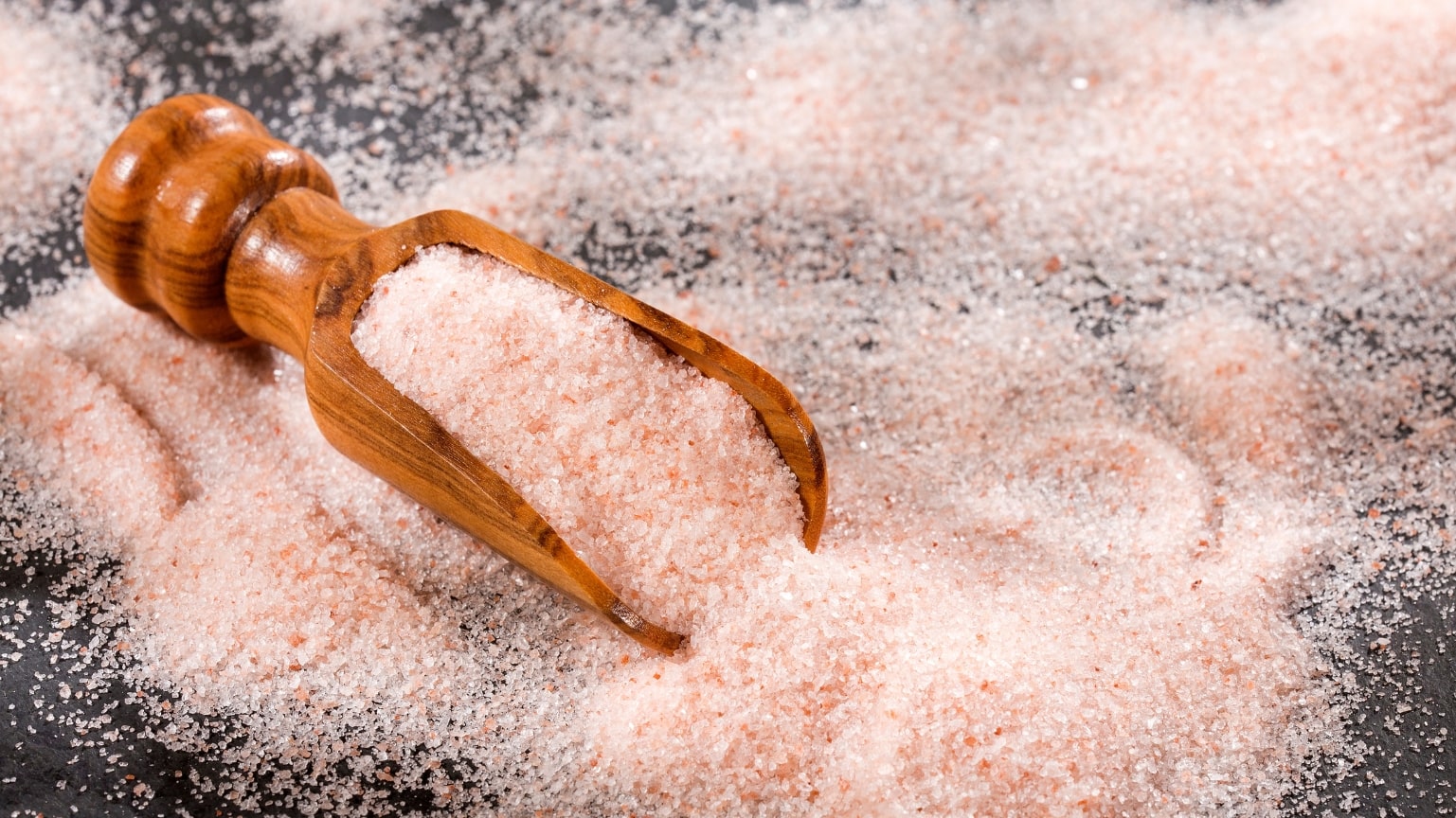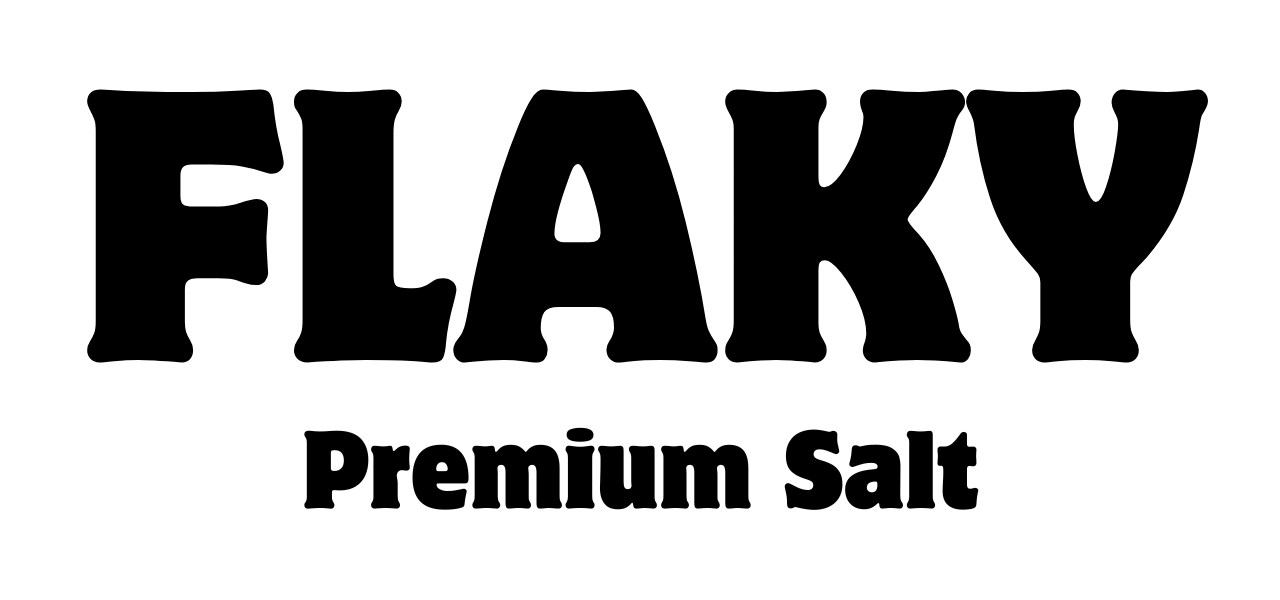Salt, a culinary cornerstone, is not merely a seasoning but a nuanced ingredient that can elevate dishes to new heights. In the realm of gourmet salts, Himalayan salt and sea salt stand out as favourites among chefs and home cooks alike. But which one is better, and how do they compare? Let’s delve into the salty showdown of Himalayan salt vs. sea salt.
Origins of Himalayan Salt and Sea Salt
Himalayan Salt History
Himalayan pink salt, often referred to as the “pink gold,” originates from the Khewra Salt Mine in the Punjab region of Pakistan, nestled amidst the majestic Himalayan Mountains. These minerals have infused the salt with a unique color and subtle flavor, making it a prized and globally renowned gourmet salt.
Sea Salt History
Sea salt, an age-old culinary treasure, has a rich history dating back centuries. Its origins can be traced to ancient civilizations that thrived along coastlines. These early societies, such as the Egyptians, Greeks, and Romans, recognized the value of salt in preserving food, flavoring dishes, and even using it for medicinal purposes. Salt played a crucial role in trade and economics, often referred to as “white gold.” The process of evaporating seawater to obtain salt dates back to ancient times, and it was initially labor-intensive. However, technological advancements, such as solar evaporation techniques, streamlined production. Today, sea salt continues to be cherished for its clean, briny flavor and versatility in culinary applications, reflecting a history that spans millennia.
How Are The Salts Formed?
How is Himalayan Salt Created?
Himalayan pink salt is formed through a remarkable geological process that spans millions of years. It originates from the remnants of the ancient Tethys Sea, which once covered what is now the Himalayan region. As this ancient sea gradually evaporated, it left behind massive salt deposits buried deep within the Earth’s crust. Over time, immense geological forces, including the collision of tectonic plates, caused the Himalayan mountains to rise, exposing these salt deposits to the surface. The distinctive pink hue of Himalayan salt is attributed to trace minerals, such as iron oxide, which infuse the salt crystals with their unique colour and subtle flavor. This natural and ancient process has made Himalayan pink salt a prized and globally renowned gourmet salt, treasured for both its culinary and aesthetic qualities.
How Is Sea Salt Created?

Sea salt is formed through a natural and straightforward process: the evaporation of seawater. It begins with the sun’s radiant heat warming vast bodies of seawater in coastal regions around the world. As the seawater absorbs this energy, it begins to evaporate, leaving behind salt crystals. Over time, as more water evaporates, these salt crystals become more concentrated and eventually precipitate as solid salt. The salt is then harvested, typically by hand or through mechanical means, depending on the specific location and traditions.
Texture
Himalayan Salt Texture
Himalayan salt, celebrated for its unique texture, offers a delightful sensory experience. Its crystals are typically coarse and irregular in shape, with a pleasing tactile quality that makes it easy to handle and sprinkle by hand. This distinctive texture adds an element of artistry to culinary creations, whether it’s the satisfying crunch when used as a finishing touch on a dish or the delightful texture it imparts when used as a cooking surface, such as in salt blocks or salt plates. The larger, uneven crystals of Himalayan salt not only elevate the visual appeal of dishes but also provide a gradual dissolution when used in cooking, allowing for an enhanced flavour profile and a satisfying overall culinary experience.
Sea Salt Texture
Sea salt offers a versatile texture that can vary based on its source and processing. Commonly, sea salt is available in various textures, from fine to coarse, and even in flake form. The texture depends on factors such as where it’s harvested and how it’s processed. This versatility allows chefs and home cooks to select the ideal sea salt texture to suit their culinary needs. Fine sea salt dissolves quickly, making it great for recipes that require precise measurements, while coarse or flake sea salt provides a delightful textural contrast when used as a finishing touch on dishes.
Appearance
Appearance of Himalayan Salt

Himalayan salt is renowned for its distinctive and visually striking appearance. Its crystals are typically characterized by a soft, rosy pink hue, a hallmark attributed to the presence of trace minerals, particularly iron oxide, found in the salt. This naturally occurring coloration creates a visually appealing contrast when used as a seasoning or garnish, adding an artistic touch to dishes. Beyond its exquisite pink color, Himalayan salt is available in various forms, including fine grains, coarse crystals, and even large decorative chunks, each showcasing the unique and captivating aesthetics that make it a favorite among chefs and home cooks for both culinary and decorative purposes.
Appearance of Sea Salt
Sea salt typically presents as white or slightly grayish crystals, reflecting its origin from evaporated seawater. The colour of sea salt can vary slightly depending on factors such as the source of the seawater and the minerals present in it. While it may not boast the vibrant pink hue of Himalayan salt or the dark colours of some speciality salts, the clean and neutral appearance of sea salt allows it to seamlessly blend into a wide range of culinary applications.
Taste Profile of Himalayan Salt vs Sea Salt
Taste of Himalayan Pink Salt
Himalayan salt offers a mild and nuanced taste that distinguishes it from ordinary table salt. Its flavour is often described as subtle and less aggressive, allowing it to enhance the natural taste of ingredients without overpowering them. The saltiness is present but gentle, making it a versatile choice for a wide range of culinary applications. What sets Himalayan salt apart is the subtle complexity it adds to dishes due to the presence of trace minerals like iron, magnesium, and potassium. These minerals infuse a delicate minerality and a hint of earthiness, creating a well-rounded and intriguing flavour profile. Himalayan salt’s ability to elevate dishes with its mild yet intricate taste has made it a cherished seasoning for those who appreciate the subtle artistry of flavour in their cuisine.
Taste of Sea Salt
Sea salt boasts a clean and briny taste that is often perceived as more pronounced compared to table salt. Its flavour is straightforward and carries the essence of the ocean, which complements a wide range of dishes beautifully. Sea salt enhances the natural flavours of ingredients, making it a popular choice as a finishing salt. Depending on the specific source of seawater, sea salt’s flavour complexity may vary slightly, with some varieties having subtle marine notes or a more pronounced saltiness. Its ability to seamlessly elevate the taste of salads, seafood, grilled meats, and even desserts has established sea salt as a culinary essential, cherished for its ability to add a delightful burst of briny flavour to any dish.
Ways to Use Himalayan Salt and Sea Salt
How to Use Himalayan Salt?
Himalayan pink salt, with its unique qualities, is a versatile ingredient that finds various uses in both culinary and non-culinary applications. Here are some of the different ways you can use Himalayan pink salt:
- Cooking and Seasoning: Use it as a flavorful seasoning for dishes ranging from savoury to sweet. It can enhance the taste of meats, seafood, vegetables, and even desserts. Sprinkle it on food while cooking or use it as a finishing touch.
- Cooking Surface: Himalayan salt blocks or plates can be used as cooking surfaces. Heat them on a grill or stovetop and cook food directly on the block. This imparts a unique and delicate saltiness to your dishes.
- Salt Grinders: Fill salt grinders with coarse Himalayan pink salt for convenient use in the kitchen. Grind it directly onto dishes to control the level of seasoning.
- Baking: Incorporate fine Himalayan salt into baking recipes, such as bread, cookies, or cakes, to add depth and balance to the flavours.
- Brine: Create a brine for meats, poultry, or fish by dissolving Himalayan salt in water along with herbs and spices. Brining enhances flavour and keeps meats moist when cooking.
- Salt Rimming: Use it to rim cocktail glasses, especially for margaritas or other salt-rimmed drinks, adding a touch of elegance and flavour.
- Preservation: Due to its antimicrobial properties, Himalayan salt can be used for food preservation, such as curing meats or preserving certain vegetables.
- Bathing: Enjoy the benefits of Himalayan salt in a relaxing bath. Dissolve it in warm water for a soothing soak that can help relax muscles and detoxify the skin.
- Salt Lamps: Himalayan salt lamps are popular for their decorative and alleged air-purifying properties. These lamps emit a warm, soothing glow when lit.
- Salt Blocks for Chilling: Himalayan salt blocks can be used as serving platters or for chilling foods like sushi, cheese, or desserts. They impart a subtle saltiness to the foods they come into contact with.
- Health and Wellness: Some people use Himalayan salt for its potential health benefits, such as creating salt sole solutions (salt water solutions) for mineral intake. However, it’s essential to consult a healthcare professional for dietary advice.
- Decoration: Himalayan salt chunks or crystals are often used as decorative elements in homes, restaurants, and wellness spaces, adding a touch of natural beauty to the surroundings.
There are many different ways to use Himalayan Pink Salt, you can buy our Himalayan pink salt here.
How to Use Sea Salt?
Sea salt is a versatile ingredient with numerous culinary and non-culinary applications. Here are some of the different uses of sea salt:
Culinary Uses
- Seasoning: Sea salt is a classic seasoning used to enhance the flavour of a wide range of dishes, from savoury to sweet.
- Finishing Salt: Its clean, briny taste makes it an excellent finishing salt, sprinkled over dishes just before serving to add a burst of flavour and texture.
- Cooking: Sea salt can be used during cooking to infuse dishes with a mild briny flavour. It’s often added to pasta water, soups, and stews.
- Baking: Sea salt is a common ingredient in baking recipes, where it balances flavours and enhances the taste of baked goods.
- Curing: Sea salt is used in the process of curing meats and fish to preserve and flavour them, as in the case of gravlax or salted cod.
Non-Culinary Uses
- Preservation: Historically, sea salt was used for food preservation, particularly for meats and fish. Its moisture-absorbing properties help prevent spoilage.
- Homemade Cleaners: Sea salt can be combined with other natural ingredients to create homemade cleaning products for scrubbing surfaces.
- Skin Exfoliation: In skincare, sea salt is used as an exfoliant in scrubs to remove dead skin cells and promote smooth, healthy skin.
- Bath Soaks: Sea salt baths are popular for relaxation and rejuvenation. Dissolving sea salt in a warm bath can help soothe sore muscles and detoxify the skin.
- Hair Care: Some use sea salt sprays or scrubs for hair to add texture and volume, creating beachy, wavy styles.
- Natural Deodorant: Sea salt can be used as a natural deodorant due to its antimicrobial properties, helping to control odour.
- Gardening: In gardening, sea salt can be used to control weeds, as it can dehydrate and kill unwanted plants.
- Rust Removal: A mixture of sea salt and lemon juice can be used to remove rust stains from various surfaces.
- Fire Extinguisher: In case of grease fires, sea salt can be used to smother the flames by cutting off the oxygen supply.
- Foot Soaks: Soaking your feet in warm water with added sea salt can help relieve soreness and reduce foot odour.
Mineral Content
Himalayan Salt Mineral Content
Himalayan pink salt is renowned for its rich mineral content, which sets it apart from regular table salt. This natural salt contains over 84 trace minerals and elements, including magnesium, potassium, calcium, and iron, among others. These minerals not only contribute to the salt’s distinctive pink colour but also provide potential health benefits. For instance, magnesium supports muscle and nerve function, while potassium helps regulate blood pressure. Calcium is essential for strong bones, and iron is crucial for oxygen transport in the body. While the quantities of these minerals in Himalayan salt are relatively small compared to other dietary sources, its unique mineral profile adds to its allure for those seeking a more natural and holistic approach to seasoning their food.
Mineral Content in Sea Salt
Sea salt is a naturally occurring salt formed through the evaporation of seawater. While its exact mineral content can vary depending on its source and processing, sea salt generally contains a variety of essential minerals and trace elements. These can include magnesium, calcium, potassium, and sodium, among others. The mineral content in sea salt can give it a slightly different flavour profile compared to table salt, and some people appreciate the subtle complexity it adds to dishes. However, it’s important to note that the mineral content in sea salt is typically lower than that found in Himalayan pink salt or other speciality salts, and the precise composition may vary based on where the salt is harvested from. If you’re looking for the purest sea salt, you can consider to shop for our organic sea salt.
Which Is Better, Himalayan Salt or Sea Salt?
The choice between Himalayan salt and sea salt ultimately comes down to personal preference and specific culinary needs. Both salts have their unique characteristics, and neither can be definitively labelled as “better” than the other. Instead, it’s essential to consider how each salt aligns with your taste preferences and intended culinary applications.
Taste Comparison
Himalayan pink salt boasts a subtle and complex flavour profile with mild minerality. It enhances the natural taste of ingredients without overpowering them. This nuanced taste makes it an excellent choice as a finishing salt to add a delicate touch to dishes. If you appreciate a more refined and less salty flavour, Himalayan salt may be your preference.
Sea salt offers a clean and briny taste, with a slightly more pronounced saltiness compared to Himalayan salt. Its straightforward flavour complements a wide range of dishes, making it a versatile option for everyday cooking and seasoning.
Mineral Content Comparison
Himalayan pink salt is renowned for its rich mineral content, including magnesium, potassium, calcium, and iron. While the quantities of these minerals in salt are relatively small compared to other dietary sources, some individuals appreciate the potential health benefits associated with these trace minerals.
Sea salt also contains minerals, albeit in varying quantities depending on its source. While it may not have the same mineral diversity as Himalayan salt, it still contributes essential minerals like magnesium, calcium, and potassium to your diet.
Versatility and Aesthetics Comparison
Himalayan pink salt’s distinct pink hue and crystalline structure make it an aesthetically pleasing addition to dishes. It is often used for decorative purposes, such as salt plates or as a visually appealing finishing touch on both savoury and sweet creations.
Sea salt’s neutral appearance allows it to blend seamlessly into various culinary applications. It’s a versatile choice suitable for everyday cooking and seasoning without drawing attention away from the overall presentation of the dish.
Culinary Application Difference
Himalayan pink salt excels as a finishing salt due to its delicate flavor and aesthetic appeal. It’s perfect for enhancing the visual and taste aspects of salads, grilled meats, or chocolate desserts. However, its mild flavour might not be the best choice for highly salted recipes that require precise measurements.
Sea salt is a workhorse in the kitchen, readily used in various cooking methods and dishes. It’s ideal for boiling pasta, seasoning soups, or grilling meats. Its slightly stronger saltiness can withstand high-heat cooking, making it a practical choice for a wide range of culinary applications.
Conclusion
The choice between Himalayan salt and sea salt should be based on your specific culinary goals and preferences. Both salts offer their own unique qualities, and many chefs and home cooks find value in having both varieties in their kitchens to use in different scenarios. Ultimately, the “better” salt is the one that aligns best with your taste and culinary needs. We also have other different types of salt that can elevate your cooking experience, you can shop them here.
